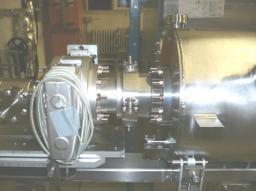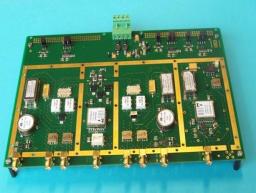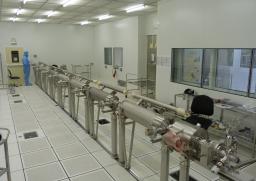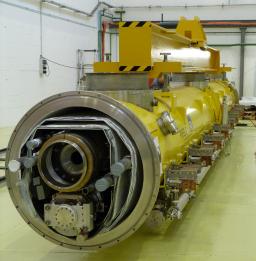The European X-ray Free Electron Laser (E-XFEL) project will use a 17.5 GeV electron beam to create an X-ray source that will be a million times more intense than synchrotron-based sources. Located in Hamburg near DESY, the German Electron Synchrotron, it will be used to explore new fields in chemistry, biology, and material science in which there is a requirement for intense and ultra-short (sub-picosecond) beams. IRFU is participating in the construction of the XFEL linear accelerator in association with DESY, IN2P3 and INFN, and is responsible for the overall integration of the 103 accelerating cryomodules at Saclay, together with the manufacture of a third of the beam position monitors.
Beam position monitors
SACM is responsible for the design, construction and installation of 31 re-entrant beam position monitors (BPM). A re-entrant BPM consists of a re-entrant cavity fitted with four antennas, together with their analog electronics. As the beam passes through the cavity, it excites electromagnetic modes and generates signals in the four antennas in the cavity. These signals are fed to the associated electronics where they are processed to provide information on the position and intensity of the beam at a given position within the machine.
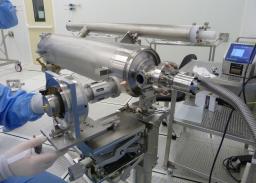
The power couplers used to transmit power to the cavity and the beam consist of two sections. The section operating at cryogenic temperatures (shown being handled by the operator) is assembled in the ISO4 cleanroom
The monitors will be fitted to a third of the XFEL cryomodules. They will be connected to the quadrupoles in the cleanroom at DESY, then shipped to Saclay for assembly into the cavity string. They must be compatible with the vacuum properties and cleaning procedures in order to work in an ultra-clean environment at a temperature of 4 K. The beam tube is copper plated in order to reduce cryogenic losses. The beam tube is 78 mm in diameter and each monitor has a length of 170 mm.
The system electronics is based largely on an analog signal processing system developed by the CEA. The system is housed in a rack shared by all the XFEL BPMs that was developed by the Paul Scherrer Institute (PSI). The temporal resolution of around 40 ns is sufficient to make measurements on individual packets. The specified spatial resolution is 50 µm.
the aim of validating the design of the beam monitors and their electronics, a re-entrant BPM cavity has been installed in a prototype XFEL cryomodule, and another has been fitted to the Free Electron Laser in Hamburg (FLASH) linear accelerator in order to carry out tests with a live beam.
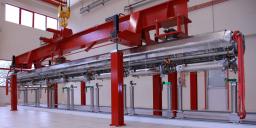
The cavity string fitted with super-insulation, magnetic shielding and frequency tuning system is suspended adjacent to the cryogenic distribution system. The assembly is moved from one work station to another through the doors (shown in red).
Integration of the cryomodules
In order to provide for the integration of the cryomodules, SACM has developed an assembly infrastructure known as the ‘XFEL Village’. This has been made available to an industrial partner for the three years required for the operation.
The layout of this infrastructure was finalized in 2008 as part of the preliminary manufacturing study carried out by Thales DIS, and extends to three assembly halls. Optimized for the production of one cryomodule per week, the assembly facility consists of a series of seven work stations used to assemble the cryomodule components over a period of seven weeks, beginning with the assembly of eight superconducting accelerating cavities into a twelve meter long string in the large cleanroom. The other work stations are dedicated to the alignment of the cavities, their insertion into the cryostat, and the fitting of the eight radio frequency power couplers.
The installation was qualified in 2011 and 2012 during a prototyping phase involving the assembly of three cryomodules. Part of the industrial team who will begin assembling the modules in March 2013 have been at IRFU since September 2012.

